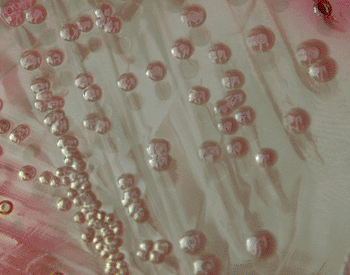Pathogens Remove Myristic Acid from Immune Cell Signaling Proteins
By LabMedica International staff writers
Posted on 15 Apr 2013
An enzyme produced by the pathogenic bacterium Shigella flexneri selectively removes a fatty acid from certain membrane proteins and modifies their behavior in a fashion that disables the immune system’s communication infrastructure. Posted on 15 Apr 2013
Myristic acid, a 14-carbon fatty acid, is commonly added to the penultimate, nitrogen-terminus, glycine residue in receptor-associated kinases to confer the membrane localization of the enzyme. The myristic acid has a sufficiently high hydrophobicity to become incorporated into the fatty acyl core of the phospholipid bilayer of the plasma membrane of the eukaryotic cell. In this way, myristic acid acts as a lipid anchor in biomembranes. This modification is conserved across eukaryotic species and occurs on nearly 1% of the cellular proteome. Addition of myristic acid to proteins (myristoylation) has received a lot of attention from researchers due to its crucial role in the transformation of normal cells to cancer cells and for promoting cancer cell growth.

Image: Shigella flexneri (Photo courtesy of Bacteria in Photos).
Some pathogenic organisms avoid immune system responses by removing myristic acid from immune cell membrane proteins (demyristoylation) and thereby disrupting communication among the various types of immune cells. Investigators at the University of Texas Southwestern Medical Center (Dallas, USA) described in the April 4, 2013, issue of the journal Nature an irreversible mechanism of protein demyristoylation catalyzed by IpaJ (invasion plasmid antigen J), a previously uncharacterized Shigella flexneri type III effector protein with cysteine protease activity.
They reported that mass spectrometry had showed that IpaJ cleaved the peptide bond between N-myristoylated glycine-2 and asparagine-3 of human ARF1 (ADP-ribosylation factor), thereby providing a new mechanism for host secretory inhibition by a bacterial pathogen. In addition, they showed that IpaJ cleaved an array of N-myristoylated proteins involved in cellular growth, signal transduction, autophagasome maturation, and organelle function.
“Our findings provide insight into severe bacterial infectious diseases, as well as some forms of cancer, in which the attachment of fat molecules to proteins is an essential feature of the disease process,” said senior author Dr. Neal Alto, assistant professor of microbiology at the University of Texas Southwestern Medical Center.
“Normally, a macrophage will engulf an invading bacteria and send out cytokines, proteins that act as cellular alert signals, which in turn recruit more immune cells to the site of infection,” said Dr. Alto. “When the macrophages engulf Shigella, however, the bacteria use IpaJ to cut fatty acids from proteins, which need those fats attached in order to sound the alarm. Doing so buys more time for the bacteria to grow and survive. It is very interesting from a disease process point of view, but it is also important because we now have a potential drug target. The next step will be to identify small molecule inhibitors that are specific to this fat-snipping protease and that might be developed into drugs.”
Related Links:
University of Texas Southwestern Medical Center














